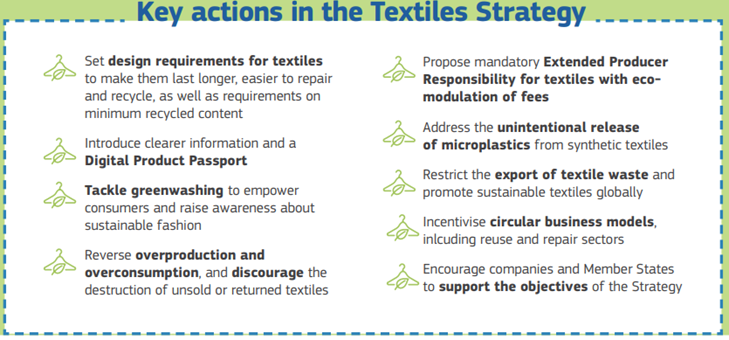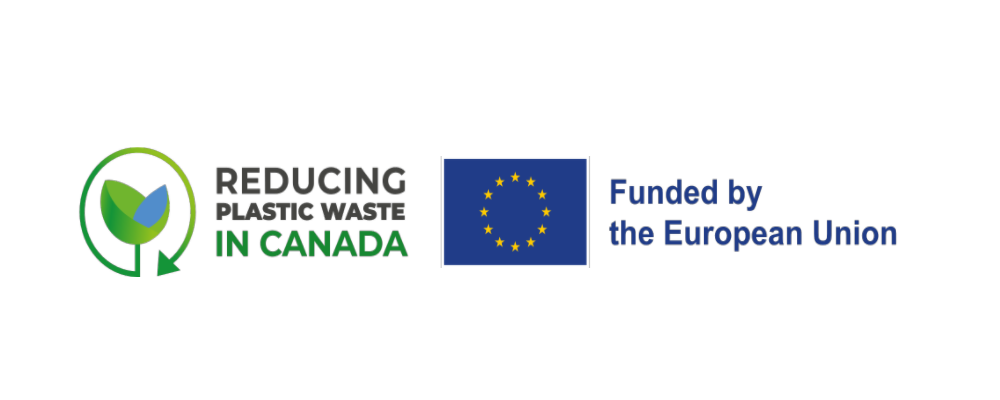Story 11: Reuse in the Textiles Sector on the Horizon to Reduce Plastic Waste
While global production and consumption of textile products continues to increase, there is an environmental impact to consider in this industry. Policies to drive sustainable practices and circularity in this sector have been announced in the EU and industry initiatives are underway.
Synthetic textile fibres such as polyester and nylon are found in approximately 60% of the European clothing market and 70% of household textiles. The production, consumption and related waste handling of these materials generate greenhouse gas emissions, use non-renewable resources and some products release microplastics when worn and laundered. The European Environment Agency has estimated that between 200 000 and 500 000 tonnes of microplastics from textiles laundering enter the marine environment each year in the EU.
In the 2020 circular economy action plan, the European Commission identified textiles as a priority product category with significant potential for circularity. The action plan envisages a comprehensive EU strategy for textiles aiming to strengthen industrial competitiveness and innovation in the sector, boosting the EU market for sustainable and circular textiles, including the market for textile reuse, addressing fast fashion and driving new business models. As part of its Circular Economy Action Plan, the European Commission published the “EU Strategy for Sustainable and Circular Textiles” in March 2022. Under the EU Waste Framework Directive, separate collection of textile waste will be obligatory in all Member States by 1st of January 2025. This will require development of sufficient sorting, reuse, and recycling capacity across Europe. The European Commission vision outlined in the Strategy is as follows:
By 2030 textile products placed on the EU market are long-lived and recyclable, to a great extent made of recycled fibres, free of hazardous substances and produced in respect of social rights and the environment. Consumers benefit longer from high quality affordable textiles, fast fashion is out of fashion, and economically profitable re-use and repair services are widely available. In a competitive, resilient and innovative textiles sector, producers take responsibility for their products along the value chain, including when they become waste. The circular textiles ecosystem is thriving, driven by sufficient capacities for innovative fibre-to-fibre recycling, while the incineration and landfilling of textiles is reduced to the minimum.

European Case Example of Reuse and Upcycling in the Textiles Sector:
A prominent European example is found in fashion group Kering’s House. Kering’s House has adopted a circular approach to identify upcycling and recycling solutions. The Group’s brands have joined forces with non-governmental organizations (NGO) and cooperatives to optimize leather and textile scrap management in manufacturing operations. Since 2018, Kering has partnered with La Réserve des Arts, an NGO that collects scrap materials and offcuts from businesses and cultural institutions in the Paris region, and since 2020 in Marseille, France, for reuse by creative professionals. In addition, Kering has been supporting Tissons la Solidarité since 2019, which is developing upcycling training for seamstresses as part of a professional reintegration program. The Group has demonstrated its ambitions through other initiatives including a strategic partnership with ECONYL® to produce and supply nylon made from plastic waste. As such, Kering is successfully regenerating its waste through nylon within a fully traceable supply chain.
URLs
https://www.interregeurope.eu/sites/default/files/2022-05/Textiles_Factsheet_EC.pdf
https://www.eea.europa.eu/themes/waste/resource-efficiency/plastic-in-textiles-towards-a
https://rreuse.org/can-re-use-save-the-planet-yes-and-we-have-the-evidence/
https://www.kering.com/en/sustainability/innovating-for-tomorrow/upcycling-and-recycling/
The European Union (EU) project on Reducing Plastic Waste in Canada




